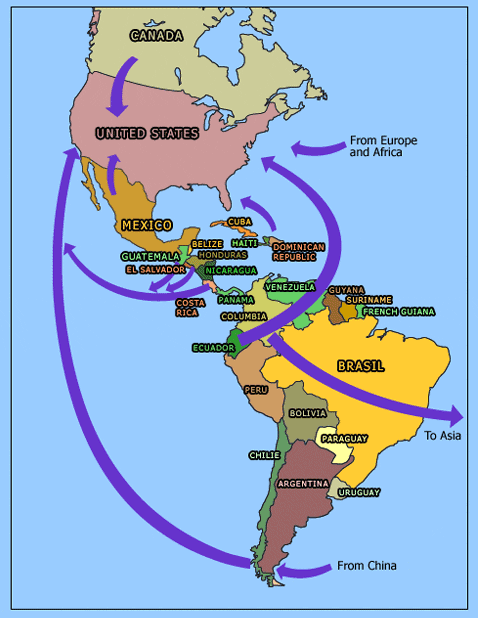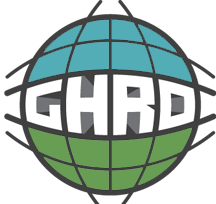Human Trafficking in Latin America
Human Trafficking can be defined as ““the recruitment, harboring, transportation, provision, or obtaining of a person for labor or services, through the use of force, fraud, or coercion for the purpose of subjection to involuntary servitude, peonage, debt bondage, or slavery” (http://www.humanrightsfirst.org/resource/human-trafficking-numbers). In Latin America and the Caribbean, over 1.8 million people are trapped in forced labor, creating the third largest illicit industry in the country (Gagne). While there are strong international laws against human trafficking, some countries in Latin America still do not have laws against it. For the countries that do have policies in place, ambiguity of the law and lack of enforcement are common themes. While this is a domestic issue, this is also a transnational problem affecting over 21 million victims (http://www.humanrightsfirst.org/resource/human-trafficking-numbers). Human trafficking is often combined with other crimes and is often done by organized groups for profit. Unfortunately, millions of people are trapped in a dangerous and exploitive system of modern-day slavery.
NGOs working on the issue
- The National Human Trafficking Hotline
- Alliance to End Slavery and Trafficking
- End Slavery Now
- Hope For the Sold
- Sold No More
Belser, Patrick. “Forced Labor and Human Trafficking: Estimating the Profits.” SSRN, International Labor Organization (ILO), 13 May 2011, papers.ssrn.com/sol3/papers.cfm?abstract_id=1838403. This source is about the financial gains from human trafficking and illustrates how the global economy is affected by it. It sheds light on the fact that profits may be much larger than thought to be, and how crucial it is for countries to implement a system of financial investigation. This source is very credible based on the fact that it was found on the SSRN research database, which houses thousands of research papers and researchers. It is also from the International Labor Organization, which is a tripartite U.N agency to set standards, policies, and programs for decent work. This will serve as a great source for information on the economical lens and also the quality of life and labor of these people. Cho, Seo-Young, et al. “Does Legalized Prostitution Increase Human Trafficking?” Science Direct, Elsevier Ltd., 2012, www.sciencedirect.com/science/article/pii/S0305750X12001453. This source is about the effect of legalized prostitution on human trafficking and how they are directly related. In retrospect, the increase of prostitution expands the market which increases human trafficking. This source is credible because it is found on Science Direct, a peer reviewed scholarly literacy tool, and the authors are experts in their field of study like economics and political science. They also cross sectioned over 150 countries which means their sampling size for their experiment is very large and can give them the best results for less bias and irrelevance. This source will be used to provide another viewpoint on how human trafficking is increased and affected by other external variables in different countries and where it is most prominent. Clawson, Heather J. “PUBLICATIONS.” NCJRS Abstract – National Criminal Justice Reference Service, ICF International, Dec. 2007, www.ncjrs.gov/App/Publications/abstract.aspx?ID=242880. The Source Zone Model was developed to estimate the number of females in the 23 countries at risk of being trafficked, and from those at risk, the number who are then possibly trafficked. The second model, the Transit Zone Model is based on descriptions of possible journeys that victims might take from their country of origin to the United States. End Slavery Now. National Underground Railroad Freedom Center. 2017. www.endslaverynow.org/. Accessed 8 September 2017. This site is helpful for those who want to find a way to get involved in human trafficking around the world. People can search and find events and resources in their area. This site will also provide information about local groups who work with human trafficking. Gagne, David. “Latin America’s Success (and Struggles) in Fighting Human Trafficking.” InSight Crime, 2 Dec. 2014, www.insightcrime.org/news-analysis/latin-america-success-unodc-human-trafficking. This article is about the new legislation made to fight human trafficking in Latin America being ineffective because authority figures are not prosecuting the crimes being committed. This source is credible because Insight crime is a foundation that studies the principle threat of organized crime. It’s composed of many journalists and researchers that provide many different lenses to the arguments and revision. It is relevant to the cause since it is primarily about human trafficking in Latin America and the struggles in combatting it, which is a different approach to view it from and be informed on. Guinn, David E. “Defining the Problem of Trafficking: The Interplay of US Law, Donor, and NGO Engagement and the Local Context in Latin America.” Human Rights Quarterly, vol. 30, no. 1, 2008, pp. 119–145. JSTOR, JSTOR, www.jstor.org/stable/20486699. This journal uses Latin America as a case study to assess the issues which hinder the basic understanding of the problems related to human trafficking in Latin America. This includes the United States role in trafficking, as well as the various social, economic, and legal issues facing Latin America. Lee, Maggy. Human Trafficking. Routledge, 2012. This book is about the debates of human trafficking and the globalization of the crime. It takes a historical, observational and theoretical viewpoint on many of the issues associated with human trafficking and discusses the major trends within. This source is credible because the author, Maggy Lee, studied at the Institute of Criminology at the University of Cambridge and is a criminal justice researcher, which makes her very well-versed in this subject and also very relevant to the topic. This will be a good source to use to give us the viewpoint of a historical and empirical lens for research. Seelke, Clare Ribando. “Trafficking in Persons in Latin America and the Caribbean.” Congressional Research Service. United States of America. October 2016, fas.org/sgp/crs/row/RL33200.pdf. This is a research report that was prepared for members of United States Congress. This document is useful for describing the current state of human trafficking specifically in Latin America and the Caribbean. It provides current information on policies that are in place, as well as consideration for future policy implementation. United States, Department of State. Office of the Under Secretary for Civilian Security, Democracy, and Human Rights. Trafficking in Persons Report. U.S. Department of State Publication, June 2017. www.state.gov/documents/organization/271339.pdf. This is a very comprehensive document created by the United States government to update readers on human trafficking around the world. There is a wide variety of information provided in the report, from descriptions of human trafficking, to a country by country report on the current state of trafficking in that location. UNODC on Human Trafficking and Migrant Smuggling. United Nations Office on Drugs and Crime. www.unodc.org/unodc/human-trafficking/. 8 September 2017. This website page has various links to sources that may be helpful when talking about human trafficking, both in Latin America and the world. There are international databases and forums that present information for researchers and victims on various topics, including court cases, UN convention information, and policy regulation.

